When you think about hydration, your mind probably goes immediately to drinks: water, tea, coffee, etc. But your body actually gets a good amount of hydration from the foods you eat. And even more so from water-rich, hydrating foods.
As for how much water you need in a day, the number varies. The National Academies of Sciences, Engineering, and Medicine suggest that women should get a total of 2.7 liters, or approximately 11 cups of total water each day, while men should shoot for 3.7 liters or 16 cups of total water each day.
However, "total water" doesn't all have to come from drinking just cup after cup of water—it can also come from foods. "About 80% of this number can come from drinking water and other beverages such as coffee, tea, milk, and juice, while about 20% comes from water-rich foods," says Roxana Ehsani, MS, RD, CSSD, LDN, a registered dietitian nutritionist in Miami, Florida. "These are water-packed foods like fruits and veggies that will help you meet your total water needs too! Specifically, raw fruits and veggies will contain the highest amount of water amongst foods."
To help meet your fluid intake requirements through food, Ehsani encourages eating fruits and veggies at every meal. "Try to incorporate fruits and veggies into each meal and snack that you are consuming," she says. "Fruits and veggies are loaded with water and will help you meet your fluid take requirements."
She adds that every time you sit down to eat or are building up your plate (or bowl) for breakfast, lunch, and dinner, make sure you are filling at least half your plate with fruits and veggies.
How to add hydrating foods at every meal.
- Breakfast: "For example at breakfast, if you love to have cereal, make sure you top your cereal with some fruit like berries or banana slices," says Ehsani. "Or let's say you prefer a savory breakfast like avocado toast and eggs. Can you add some tomato slices, leafy greens, bell peppers, and mushrooms on top of your toast or incorporate them into your eggs?"
- Snacks: "Instead of reaching for the bag of chips to get you through your mid-day slump, can you grab a piece of fruit with a handful of nuts?" suggests Ehsani. "Or sprinkle some fruit over your yogurt cup, or dip baby carrots into hummus or bean dip?"
- Dinner: "For dinner, if you are in the habit of just placing a piece or two of broccoli on your plate with a big serving of pasta or rice or steak, can you make sure at least half your plate is filled with veggies?" says Ehsani. "Maybe it's a bag of pre-made salad that you can easily dump on your plate or pop a bag of mixed frozen veggies into the microwave."
The 15 best hydrating foods, ranked from highest to lowest water content.
.
Iceberg Lettuce (96% water)
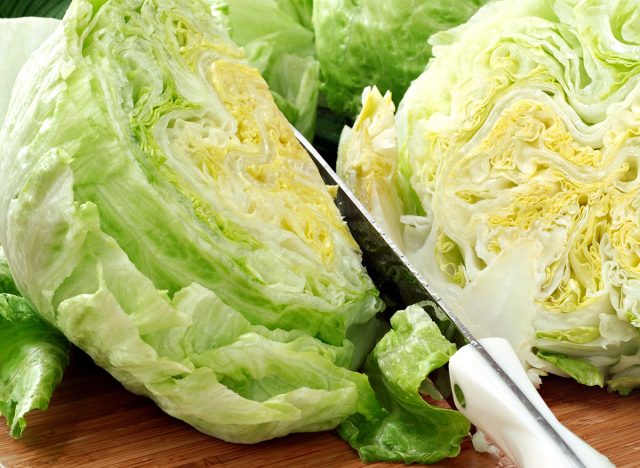
Looking for the food with the highest water content? Iceberg lettuce is it. From a nutritional standpoint, iceberg lettuce is oftentimes considered the weakest link of salad greens. But it's a rich source of water, says Alexandra Miller, MS, RDN, LDN a Corporate Dietitian at Medifast, Inc., with its H2O content registering at 96 percent. It's also low in calories (with just 10 calories per cup) and can be a source of vitamins A and C.
Cucumber (95% water)
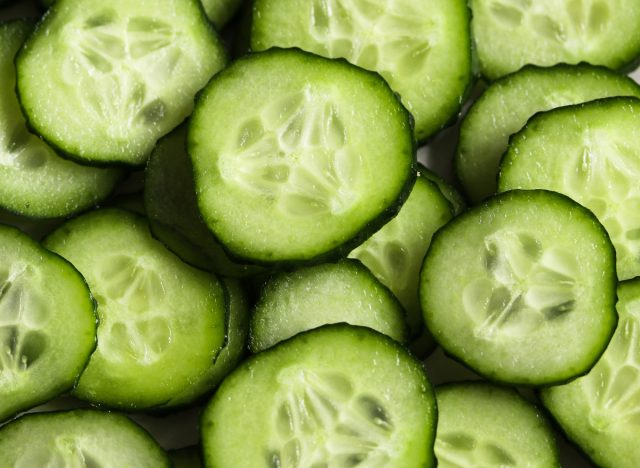
Cucumbers are packed with water. Cucumbers contain about 95 percent water, says Ilyse Schapiro, MS, RDN a registered dietitian nutritionist and co-author of Should I Scoop Out My Bagel? Plus, they're packed with potassium, which may help prevent stroke. On top of that, they contain an anti-inflammatory substance, fisetin, which promotes brain health, she says.
Zucchini (95% water)
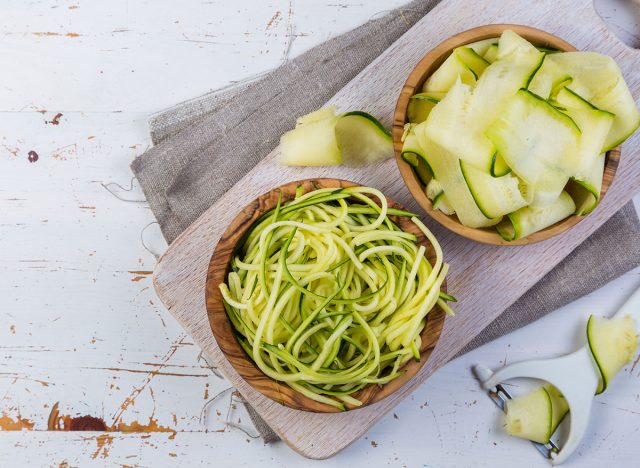
With a water content of 95 percent, zucchini is high-ranking on the highly hydrating foods list. Since it's low in calories (one small zucchini has just 20 cals!), they're the perfect substitute for pasta in spiralized zoodles form.
Celery (95% water)
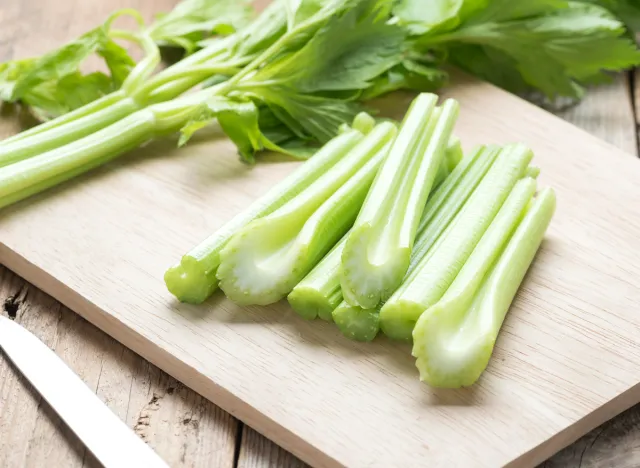
Celery is a hydrating powerhouse that is 95 percent water. A University of Illinois study found that luteolin, a flavonoid in celery, has the potential to inhibit cancer cell growth, especially in the pancreas. Another study from the University of Missouri found that apigenin, a compound found in celery, can stop breast cancer cells from multiplying and spreading.
Radishes (95% water)
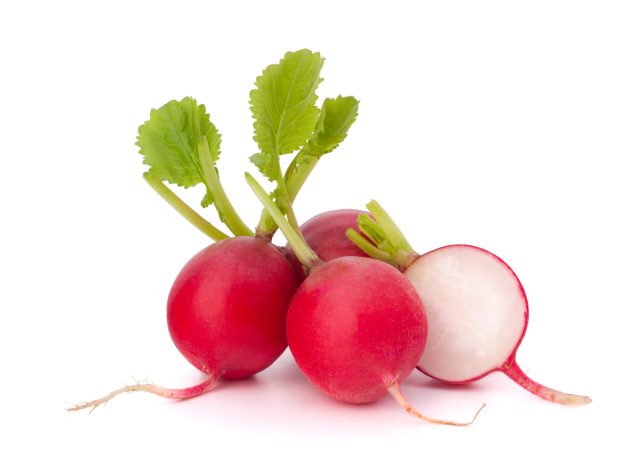
This root veggie is 95 percent water. "Radishes are known for their cooling effect. The natural heat or spicy flavor of a radish acts on the body to help alleviate excess heat in the body," says Rebecca Scritchfield, RDN, author of the book Body Kindness. She adds that they're also a great source of vitamin C, phosphorus and zinc, key minerals, and antioxidants that protect cells and nourish tissues.
Tomatoes (95% water)
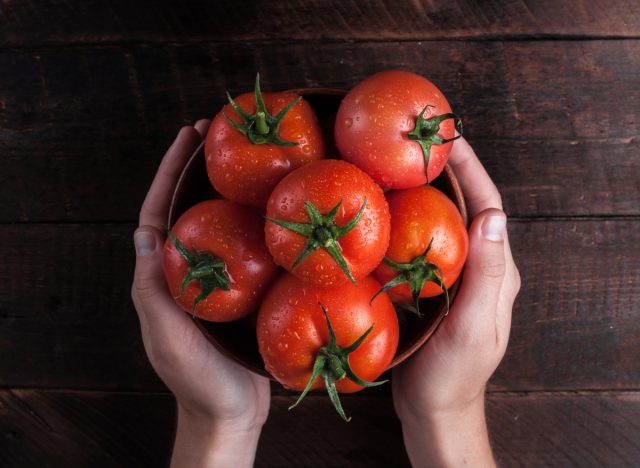
With a water content of almost 95 percent, tomatoes are the perfect food to incorporate into any meal. "Tomatoes are also packed with nutrition. They are a rich source of lycopene, a carotenoid known for its cancer-fighting effects, potassium, and vitamins A and C," says Miller.
Eggplant (92% water)
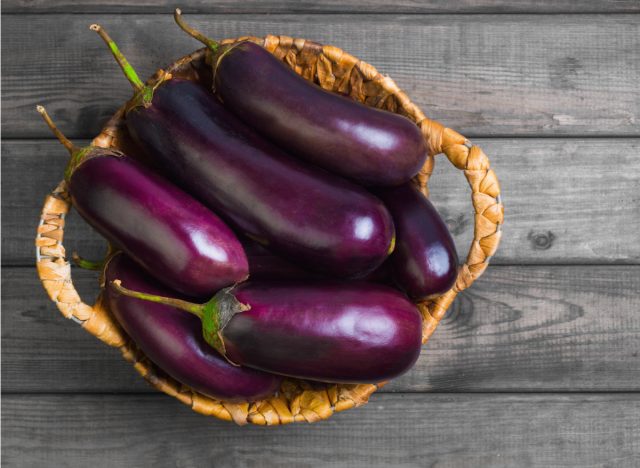
With a water content of about 92 percent, eggplants are a hydrating food that is also low in calories and a good source of dietary fiber, too. Eggplants are also a source of copper, B vitamins, manganese, vitamin K, and potassium, nutrients that support a healthy metabolic, immune, and cardiovascular system, says Miller.
Watermelon (92% water)
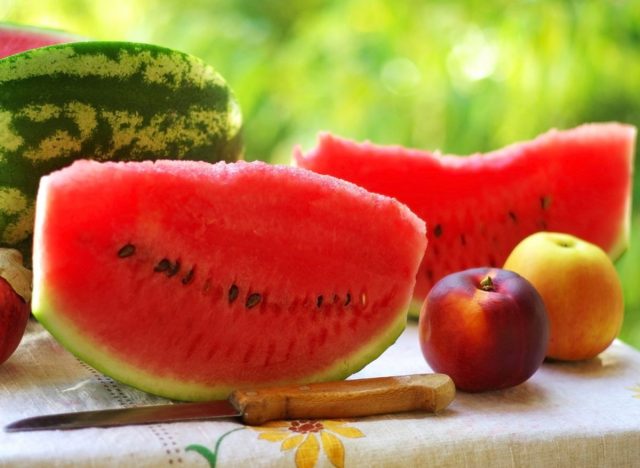
Watermelon is about 92 percent water, says Schapiro. Plus, it's filled with nutrients like vitamins A, B6, and C, as well as lycopene and antioxidants. "Use watermelon to flavor your water, or even puree it to make a healthy ice pop," Schapiro suggests.
Cauliflower (92% water)
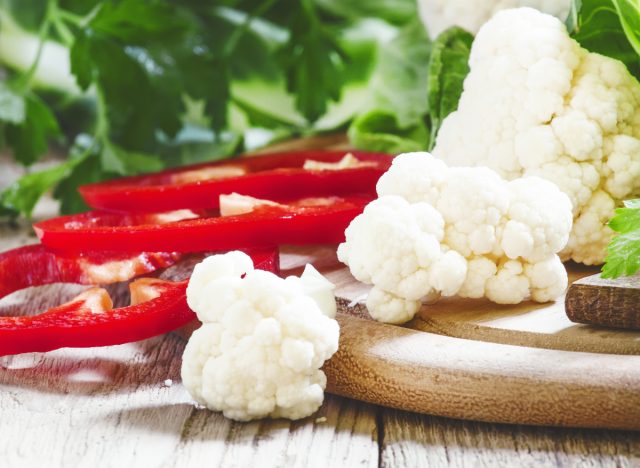
Cauliflower clocks in with 92 percent water content and it's high in fiber, with 3.5 grams in one cup of cooked cauliflower. It's also high in vitamins C and K. And by now, you know it's the perfect side dish in rice form.
Grapefruit (92% water)
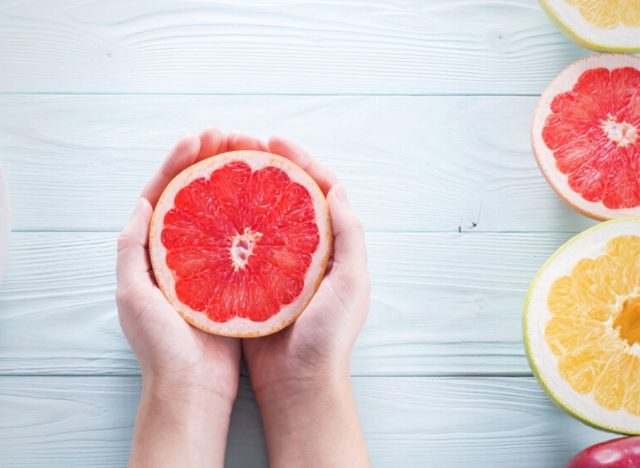
Grapefruits contain 92% water, making them one of the most hydrating fruits. They are also low in calories but high in nutrients: they are rich in vitamins A and C, and a source of powerful antioxidants that may help boost your immune system. What's not to like?
Starfruit (91% water)
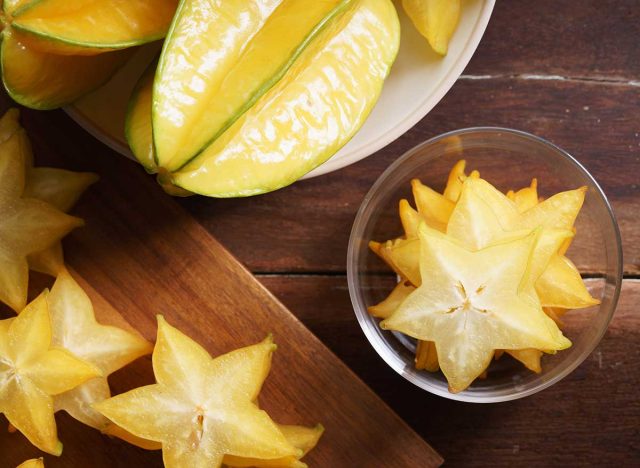
You may not be too familiar with starfruit, but it has impressive hydration stats. With more than 91 percent of its body consisting of water. It's a yellow fruit native to Southeast Asia, with edible skin and mildly sour flesh. Besides being hydrating, star fruit is a good source of fiber and vitamin C. It also contains plant compounds that have been shown to be beneficial to the liver—studies have shown they reduce the risk of fatty liver and even liver cancer. To enjoy starfruit, make sure it's ripe, then cut the ends off slice it, removing the seeds.
Cantaloupe (90% water)

This melon is another amazing option for tons of hydration. The water content in cantaloupe registers at 90 percent and is a good source of beta-carotene and vitamin C.
Jicama (90% water)
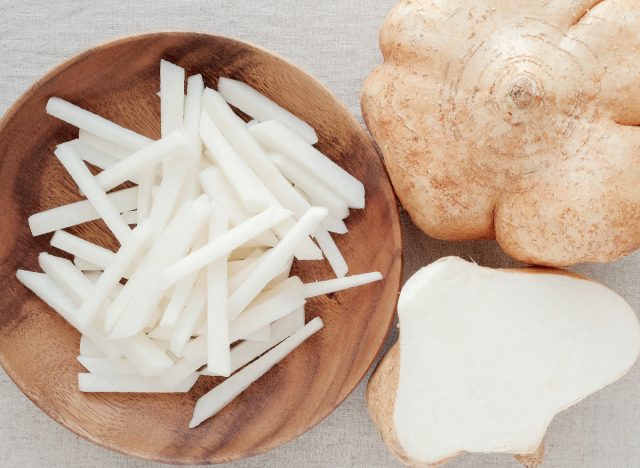
Mexican food lovers will be happy to know that jicama is made up of about 90 percent water but is also high in vitamin C, iron, and potassium. Jicama (also known as "Mexican water chestnuts") lend a satisfying crunch and can also be slightly sweet.
Carrot (88% water)
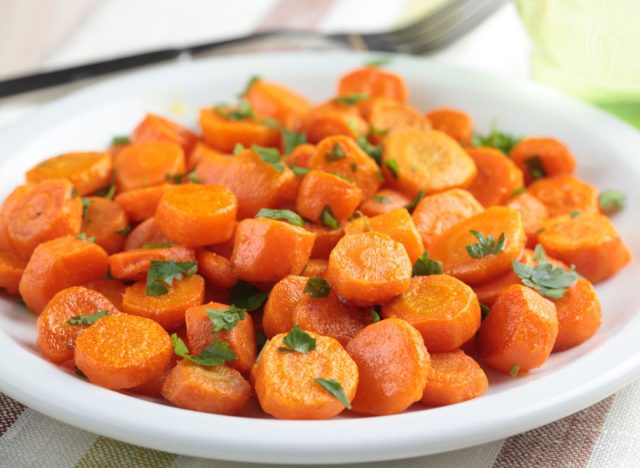
Carrots are 88 percent water and are high in fiber, making them a top hydration contender. On top of that, they're good for your eyes. "Carrots are really important for good vision," Schapiro says. "They also help your eyes glisten by supporting the moisture and mucous membranes and they help distinguish between night and day,".
Peaches (88% water)
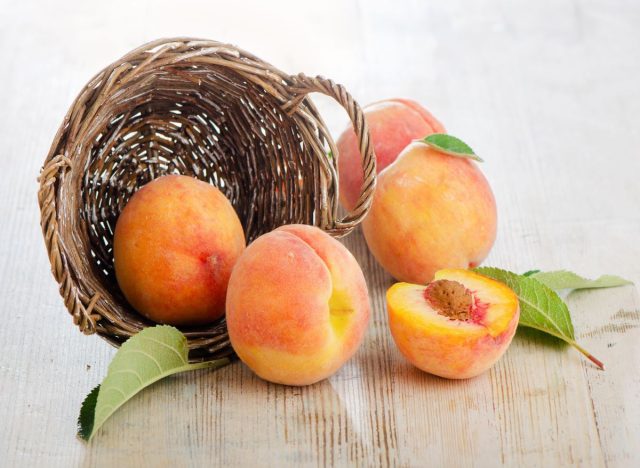
Peaches are hydrating foods that pack an impressive 88 percent water content. The stone fruit (meaning there's a pit in the middle) has the potential to prevent obesity-related diseases, including diabetes and cardiovascular disease, according to researchers from Texas A&M.
No comments:
Post a Comment